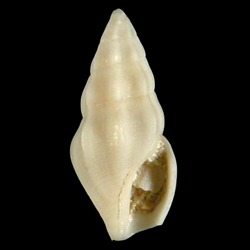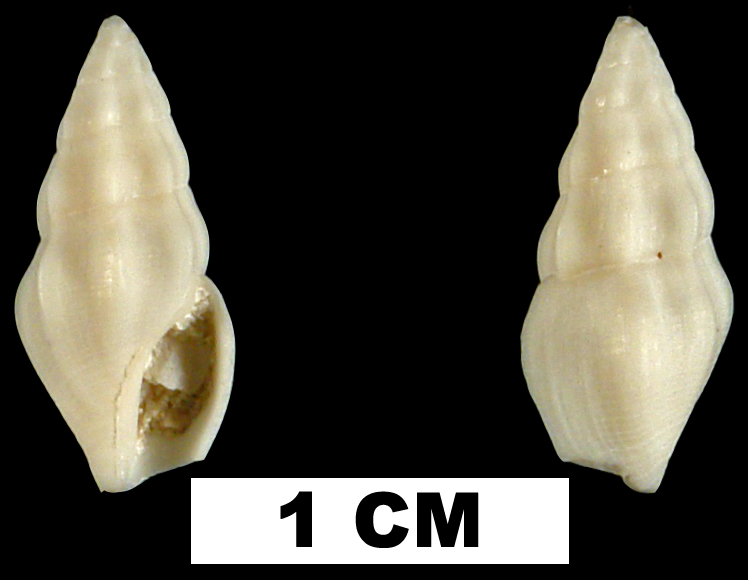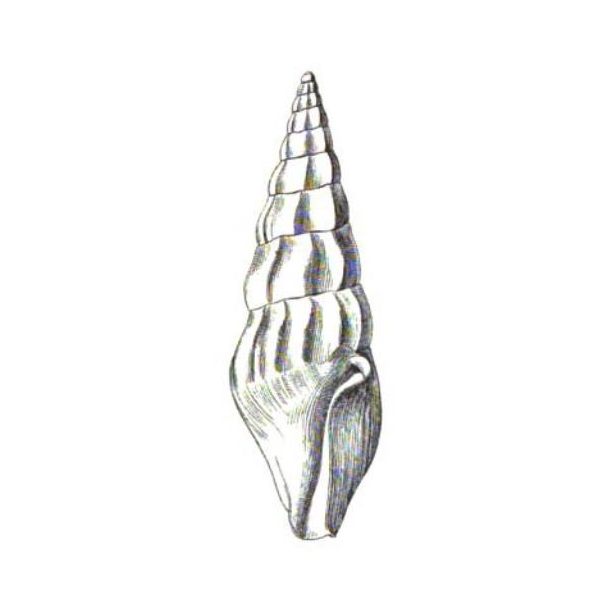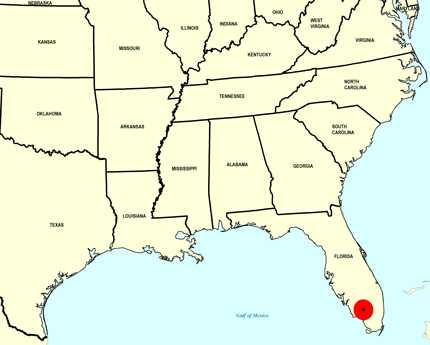
Bellaspira pentagonalis

- Phylum: Mollusca
- Class: Gastropoda
- Order: Neogastropoda
- Family: Drilliidae
- Genus: Bellaspira
- Species: Bellaspira pentagonalis (Dall, 1889)
- Common Name: Orange-rib drillia
Geological Range
Late Pliocene; Recent.
Paleogeographic Distribution
Southern Florida.
Remarks
For information on the modern distribution of the species, see Malacolog and WoRMS.
Original Description (from Dall, 1889, p. 90):
"Shell resembling D. fucata, but much more slender, the fasciole less impressed, the spiral sculpture of fine engraved lines and the aperture smaller and much more narrow. Nucleus glassy, rounded, two-whorled shell with eight or nine strongly ribbed whorls; spiral sculpture, sometimes obsolete near the suture, of extremely fine, wavy, close-set, incised lines; transverse sculpture of (on the penultimate whorl to 11) nearly straight stout ribs extending from the suture over the periphery and lost on the base fasciole not well marked suture distinct, somewhat appressed, undulated by passing over the ribs; surface more or less lustrous; color white, spirally banded with rich yellow brown, sometimes on the periphery, sometimes on the base, etc., but the fasciole is usually white and the ribs are apt to show white, wholly or in part on the yellow, when present. Aperture short, narrow, with hardly any canal; notch large and deeper than wide; outer lip thin, not internally lirate; throat white; inner lip little callous; pillar short, simple; canal very short, not differentiated from the aperture varix stout and prominent. Max. lon. of shell, 18.0; of last whorl, 9.0; of aperture, 6.3; max. lat. of shell, 5.8 mm.
Habitat. West of Florida, in 50 fms. off Havana, Sigsbee, in 119-175 fms.; Station 177, in 118 fms., sand, off Dominica, temperature 65°.0 Stations 273, 282, and 290, near Barbados, in 73 to 154 fms., coral and sand, temperature 56° to 71° F.
This species may be pure white, banded with yellow brown or spotted between the ribs with pink or brown.
A young shell, similar to the above but stouter, with the tip white, the whorls whitish and the summits of the five ribs brownish, was dredged by the Fish Commission in 49 fms., off Cape Hatteras, N. C. The ribs are continuous from base to summit and the cross-section of the shell forms an exact pentagon with rounded angles. The ribs are not continuous, except accidentally, in those previously described; but this may perhaps be an extreme variety (for which the name pentagonalis may be used) of D. pagodula. The indications are that it is the young of distinct species. Lon. of shell, 7.0 of last whorl (there are four beside the nucleus), 5.0 max. lat. of shell, 3.0 mm. There are two similar specimens. The Mangilia pentagonalis (Gray) Reeve is smaller and much more slender shell."
To access this description in its original formatting through Google Books, click here.
Stratigraphic Occurrences
- Late Pliocene
- Tamiami Formation (Pinecrest Beds) (S. FL)


